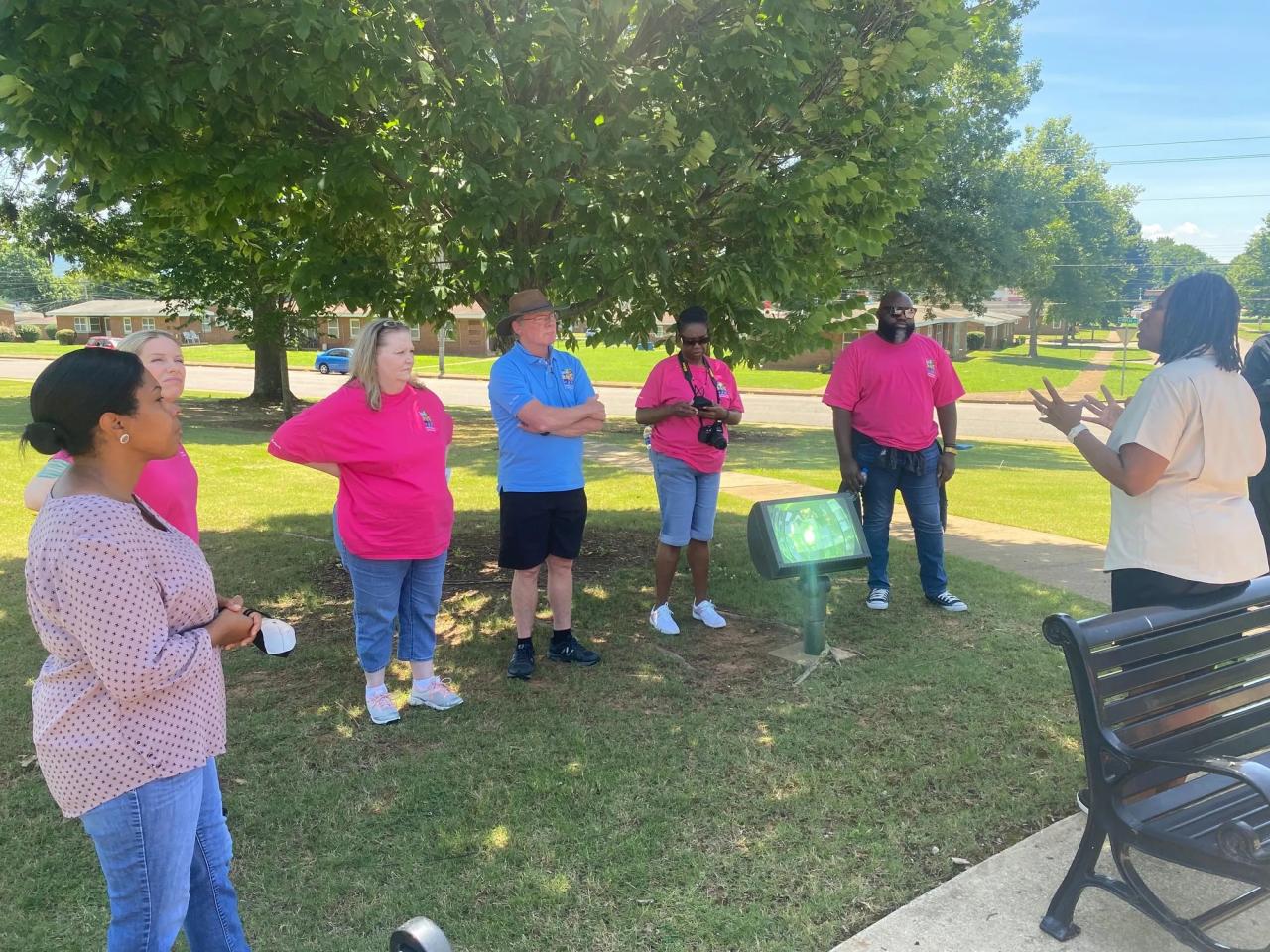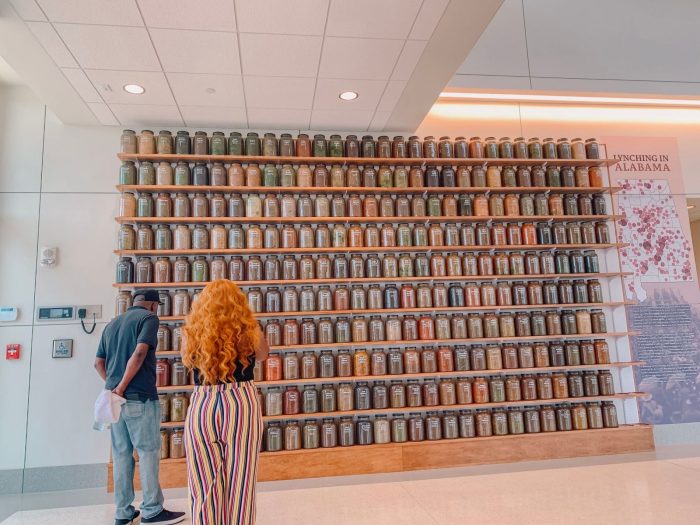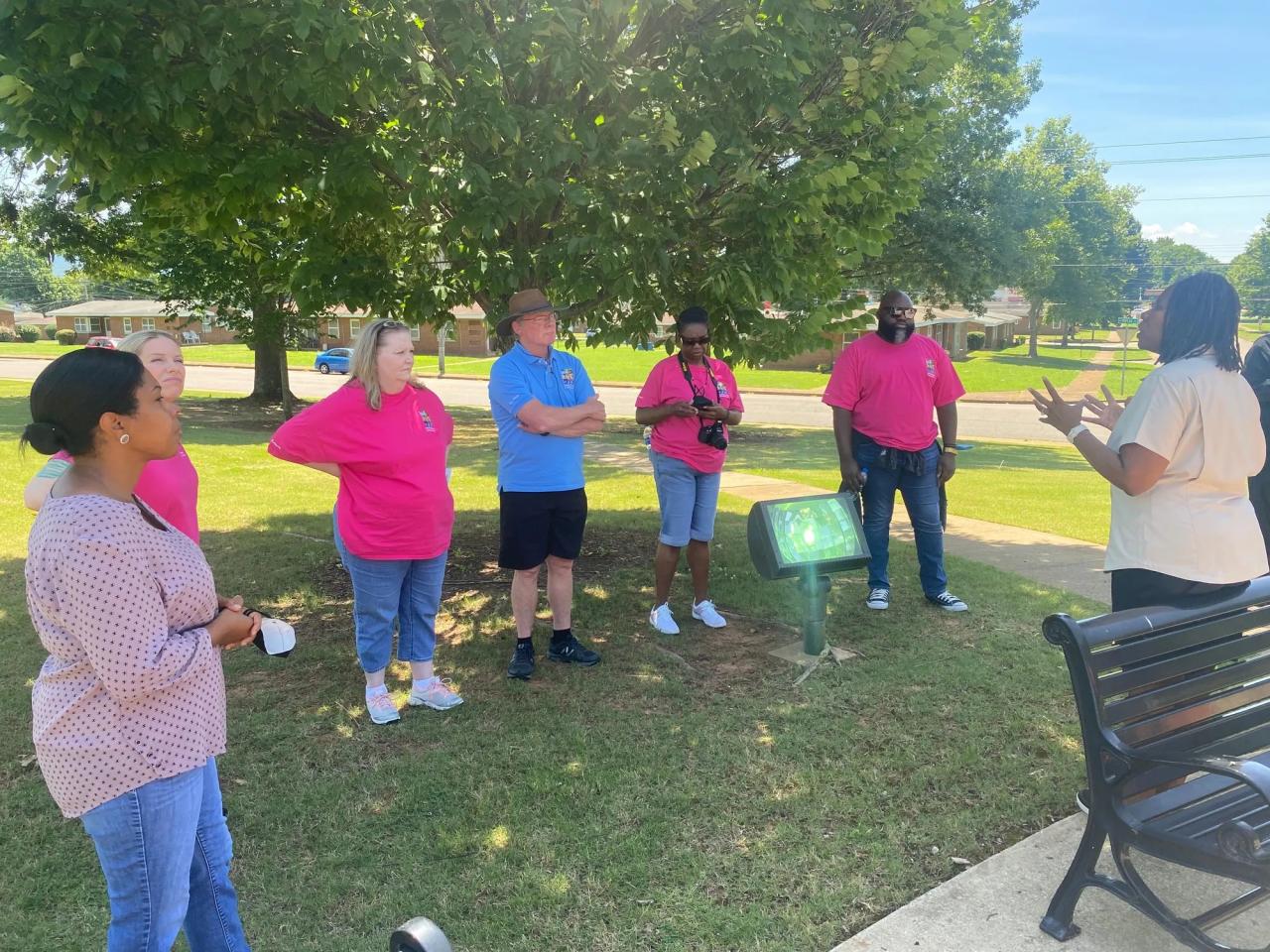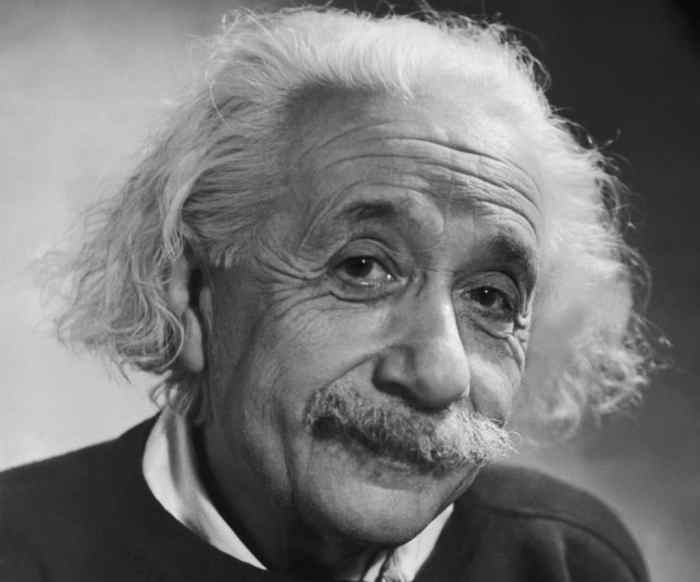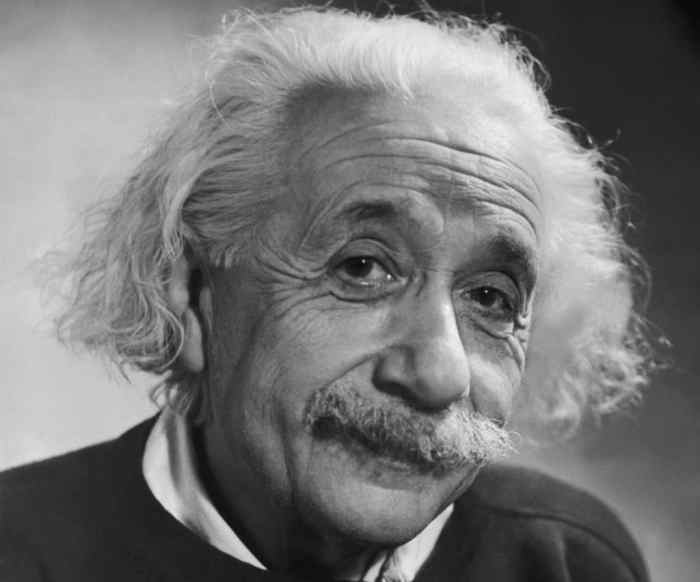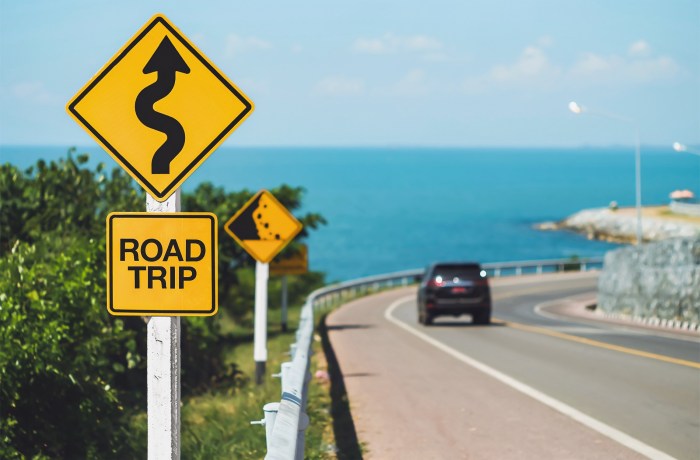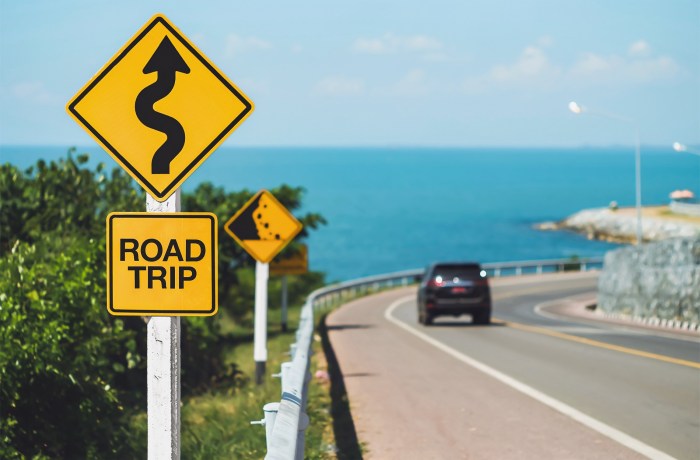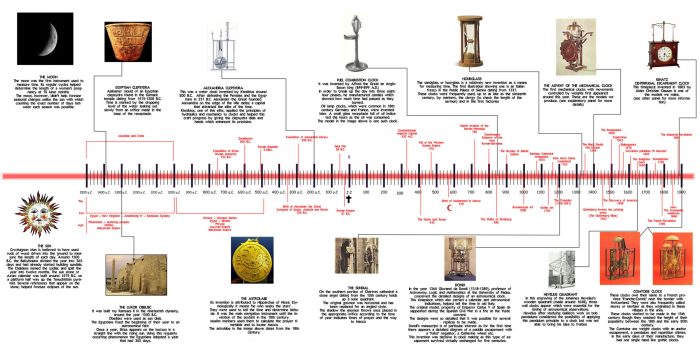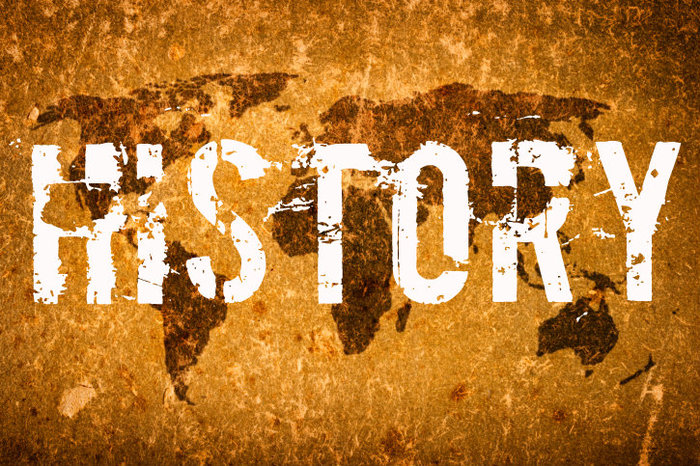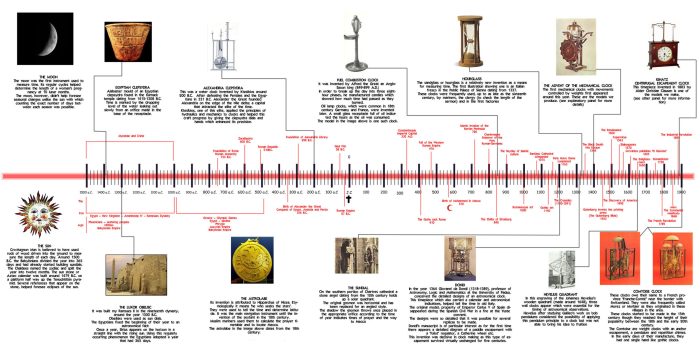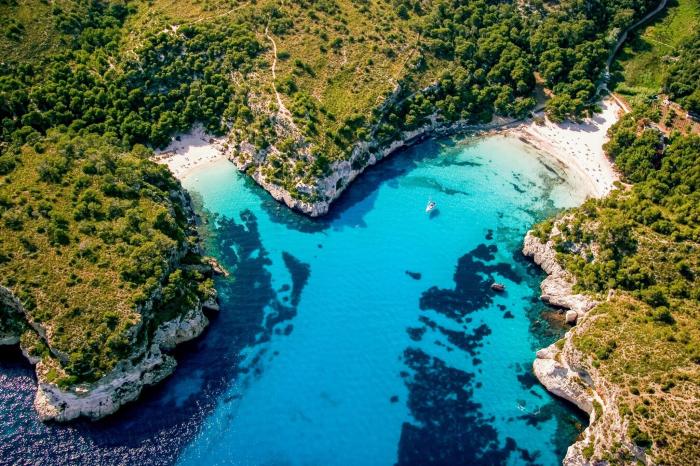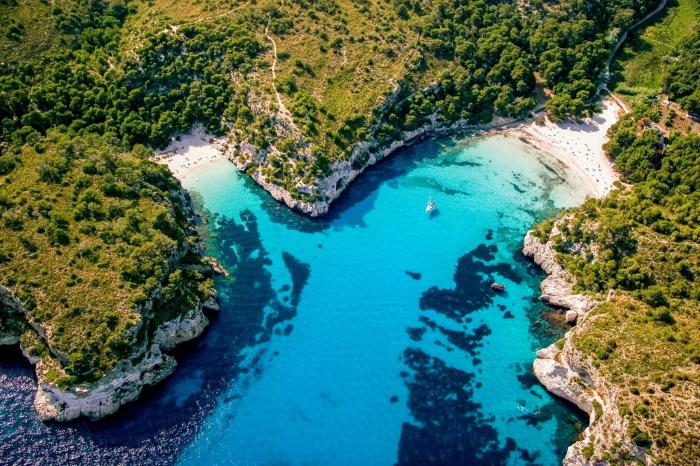Top things to do in Armenia sets the stage for this enthralling narrative, offering readers a glimpse into a land steeped in history, vibrant culture, and breathtaking natural beauty. From ancient monuments to delicious cuisine, Armenia has something to captivate every traveler. Prepare to be amazed!
This comprehensive guide delves into the must-see attractions, highlighting the historical significance of Armenian sites, the stunning landscapes, unique cultural experiences, and mouthwatering culinary delights. It also provides practical information for planning your trip, including essential details like visa requirements, accommodation options, and local customs.
Introduction to Armenia

Nestled in the Caucasus Mountains, Armenia is a land of ancient history, vibrant culture, and breathtaking landscapes. From its legendary past as a cradle of civilization to its modern-day appeal as a unique tourist destination, Armenia offers a captivating blend of experiences for visitors. Its rich heritage, stunning natural beauty, and welcoming people make it a truly unforgettable travel experience.Armenia’s history is deeply intertwined with the development of Christianity.
The first nation to adopt Christianity as its state religion, Armenia possesses a profound spiritual heritage reflected in its impressive monasteries, churches, and cultural traditions. This legacy, coupled with its strategic location at the crossroads of Europe and Asia, has shaped its cultural identity and made it a fascinating place to explore.
Geographical Overview
Armenia’s geography is diverse, ranging from the majestic peaks of the Caucasus Mountains to the fertile valleys and plains. The country is situated in a mountainous region, with dramatic landscapes that offer opportunities for hiking, trekking, and exploring picturesque villages nestled in the valleys. The varied terrain includes alpine meadows, dense forests, and arid steppes. Its unique location at the crossroads of several historical civilizations has also influenced its cultural and architectural characteristics.
Historical Significance
Armenia boasts a history stretching back millennia, making it a fascinating destination for history buffs. The country is home to numerous historical sites, from ancient ruins to medieval fortresses. Its historical significance is further highlighted by its role as one of the world’s oldest continuously inhabited countries. This rich history is evident in its architecture, traditions, and cultural expressions, creating a tapestry of experiences for those who visit.
Cultural Identity
Armenian culture is rich and multifaceted, reflecting centuries of interaction with neighboring civilizations. From its distinctive cuisine to its vibrant music and dance traditions, the country offers a unique cultural experience. The hospitality and warmth of the Armenian people further enhance the experience for visitors, making it a destination where you can immerse yourself in the local traditions and customs.
This includes its unique crafts, storytelling, and festivals.
Key Facts about Armenia
| Category | Details |
|---|---|
| Population | Approximately 3 million |
| Area | 29,743 square kilometers |
| Official Language | Armenian |
| Currency | Armenian Dram |
| Capital City | Yerevan |
Historical Sites and Monuments
Armenia boasts a rich tapestry of historical sites, each a testament to its enduring civilization and cultural heritage. From ancient citadels to majestic churches, these monuments stand as silent witnesses to the nation’s eventful past, offering invaluable insights into its artistic traditions, societal structures, and religious beliefs. Exploring these sites is akin to traveling through time, connecting with the echoes of generations past.These sites reveal not only the physical architecture but also the spirit of the Armenian people, their resilience in the face of adversity, and their unwavering commitment to preserving their cultural identity.
The architectural styles, ranging from the intricate stonework of medieval churches to the imposing grandeur of fortress walls, provide a fascinating glimpse into the evolving artistic sensibilities and construction techniques of different eras.
Prominent Historical Sites
Armenia’s historical sites are scattered across the country, each holding unique significance. These locations provide a tangible link to the past, offering a glimpse into the daily lives, beliefs, and aspirations of past generations. Their preservation is crucial for understanding the nation’s cultural identity and heritage.
Top 5 Historical Sites in Armenia
| Site | Brief History | Location | Historical Context | Cultural Importance |
|---|---|---|---|---|
| Garni Temple | A Hellenistic-style temple, built in the 1st century AD, dedicated to the god Mithras. | Near the city of Garni | Built during a period of cultural exchange and interaction between Armenia and the Roman Empire. | Demonstrates the syncretism of religious beliefs during the era. |
| Geghard Monastery | A complex of cave churches and monasteries, dating back to the 4th century. | Near the village of Geghard | Founded during a period of intense religious fervor and spiritual growth. | A significant example of rock-cut architecture and its role in religious life. |
| Etchmiadzin Cathedral | The seat of the Armenian Apostolic Church, the oldest national church in the world, established in the 4th century. | Near the city of Vagharshapat | A crucial moment in Armenian history, marking the establishment of Christianity as the national religion. | Represents the deep connection between Armenia and its religious identity. |
| Zvartnots Cathedral | A 7th-century cathedral, renowned for its unique architectural design. | Near the city of Yerevan | An example of the architectural innovation and artistic expression of the era. | Illustrates the peak of architectural achievement during the early medieval period. |
| Amberd Fortress | A medieval fortress, built in the 9th-10th centuries, as a vital defensive structure. | Near the village of Amberd | Built during a period of political upheaval and conflict, showcasing Armenia’s defense capabilities. | Highlights the importance of military architecture in safeguarding the kingdom. |
Cultural Heritage of Armenia
Armenia’s cultural heritage is deeply rooted in its history, marked by its resilience in the face of numerous challenges. The enduring spirit of the Armenian people is evident in their art, music, literature, and architecture, reflecting a rich tapestry of traditions and customs. From the intricate stone carvings of ancient monasteries to the vibrant melodies of traditional music, the cultural heritage of Armenia is a living testament to the nation’s enduring spirit.
This heritage is passed down through generations, ensuring the continuity of a unique cultural identity. This rich history is also reflected in the diverse cuisine, which is a mix of influences, showcasing a cultural fusion.
Natural Beauty and Outdoor Activities
Armenia boasts a breathtaking array of natural landscapes, from snow-capped peaks to fertile valleys and sparkling lakes. The country’s diverse terrain offers a wide range of outdoor activities, appealing to adventurers and nature enthusiasts alike. Hiking, mountain biking, and exploring ancient monasteries nestled within picturesque settings are just a few of the many possibilities. Experiencing the beauty of Armenia’s nature is a journey through time and breathtaking vistas.Armenia’s natural beauty is deeply intertwined with its rich history.
The Caucasus Mountains, a formidable range, carve through the landscape, shaping the valleys and providing stunning backdrops for ancient settlements. Lakes, like Sevan, a magnificent freshwater body, add another layer of beauty to the scenery. These diverse landscapes provide opportunities for various outdoor activities, each offering a unique experience.
Armenia boasts stunning landscapes and ancient history, making it a fantastic travel destination. Exploring the historical sites and experiencing the local culture are top priorities. For those interested in a unique urban exploration, the High Line’s connection to Penn Station ( high line penn station connection ) offers a fascinating glimpse into a different kind of urban adventure.
However, Armenia’s natural beauty and cultural richness remain a must-see for any traveler.
Diverse Landscapes
Armenia’s terrain is incredibly varied. The country is home to the Caucasus Mountains, with towering peaks like Mount Aragats. These mountains descend into fertile valleys, ideal for agriculture and settlement. Lakes, like Lake Sevan, offer opportunities for boating and fishing, and the rivers, like the Aras, carve their way through the landscape. These diverse environments support a rich variety of flora and fauna.
Popular Outdoor Activities
A plethora of outdoor activities cater to diverse interests. Hiking is immensely popular, with numerous trails ranging from easy walks to challenging climbs. Mountain biking offers an exciting way to explore the mountainous terrain. Fishing in the lakes and rivers is a relaxing experience, and birdwatching is an excellent way to appreciate the region’s biodiversity. For those seeking adventure, canyoning and rock climbing are available in certain areas.
The abundance of outdoor activities makes Armenia a paradise for nature lovers.
Best Seasons for Activities
The best time to experience different activities varies depending on the chosen activity and location. Spring offers pleasant temperatures for hiking and exploring, with wildflowers blooming in the valleys. Summer is ideal for mountain biking and water activities, but be prepared for hot days. Autumn brings vibrant colors to the forests, perfect for scenic hikes and photography.
Winter is the time for skiing and snowboarding in the higher elevations. Planning your trip around the ideal season can enhance your experience.
Seasonal Activity Comparison
| Activity | Best Season | Difficulty Level | Required Equipment |
|---|---|---|---|
| Hiking | Spring, Autumn | Easy to Challenging | Hiking boots, water bottles, sunscreen, appropriate clothing |
| Mountain Biking | Spring, Summer | Moderate to Challenging | Mountain bike, helmet, appropriate clothing, water bottles, repair kit |
| Fishing | Spring, Summer | Easy | Fishing rod, tackle box, appropriate clothing, water bottles |
| Skiing/Snowboarding | Winter | Moderate to Challenging | Ski equipment, snowboarding equipment, warm clothing, goggles, helmet |
Environmental Impact of Tourism
Tourism in Armenia, while beneficial, can have an impact on the environment. Increased foot traffic can damage fragile ecosystems, and improper waste disposal can lead to pollution. Sustainable tourism practices are crucial for preserving the natural beauty of the country. Minimizing environmental footprint and supporting local businesses that promote eco-friendly practices are essential for the future of tourism in Armenia.
Sustainability Efforts
Armenia is increasingly focusing on sustainable tourism. This includes promoting eco-friendly accommodations, encouraging responsible waste management, and supporting local communities. Efforts to educate tourists about the importance of environmental protection are also underway. These initiatives are vital for preserving the natural heritage for future generations.
Cultural Experiences and Traditions
Armenia boasts a rich tapestry of cultural traditions, woven from centuries of history and preserved with unwavering devotion. From vibrant festivals to exquisite cuisine, experiencing Armenian culture is an immersive journey into the heart of the nation’s soul. These traditions offer a profound glimpse into the values and beliefs that have shaped Armenian society.Immerse yourself in the heart of Armenian culture by engaging with local communities, participating in festivals, and savoring the delectable flavors of Armenian cuisine.
Discovering the unique traditions and customs of this ancient land will create unforgettable memories and a deeper appreciation for its cultural heritage.
Unique Cultural Traditions and Festivals
Armenian culture is deeply rooted in its rich history and traditions. Numerous festivals throughout the year celebrate significant events, showcasing the vibrant spirit of the Armenian people. These celebrations are not merely events; they are deeply ingrained expressions of cultural identity.
- Noravank Festival: This annual festival held in Noravank Monastery, showcases traditional Armenian arts and crafts, with live music, dancing, and food stalls. Visitors can experience the beauty of the monastery’s architecture while enjoying the festive atmosphere. The festival often features demonstrations of traditional Armenian weaving techniques, allowing visitors to witness and perhaps even participate in this ancient art form.
- Holy Week (Great Week): This important period in the Armenian Apostolic Church calendar is marked by a series of religious ceremonies, prayers, and special services. It is a significant time for reflection and spiritual renewal for Armenians. The processions and ceremonies offer a glimpse into the deeply religious aspect of Armenian culture.
- Tsitsernakaberd: The annual commemoration at the Tsitsernakaberd Genocide Memorial is a somber but important cultural event, honoring the victims of the Armenian Genocide. It’s a time for remembrance, reflection, and a powerful demonstration of resilience.
Armenian Cuisine and Local Food Markets
Armenian cuisine is a symphony of flavors, reflecting the country’s diverse landscapes and historical influences. The use of fresh, local ingredients is paramount, resulting in dishes that are both delicious and nutritious. Exploring local food markets is a key part of experiencing this culinary tradition.
- Local Food Markets: Markets in Yerevan and other cities are vibrant hubs, offering a rich array of fresh produce, cheeses, meats, and baked goods. Sampling local delicacies, like khorovats (grilled meats), dolmas (stuffed grape leaves), or lavash (thin flatbread), provides a tangible connection to Armenian culinary heritage. The aromas and sights alone create a memorable experience. These markets are often accompanied by lively conversations and interactions with local vendors.
- Significance of Armenian Cuisine: Armenian cuisine is more than just a collection of dishes; it’s a reflection of the country’s history and culture. The flavors, textures, and ingredients often tell stories of past traditions, regional variations, and the deep connection to the land.
Opportunities to Interact with Local Communities
Engaging with local communities is an essential part of experiencing Armenian culture firsthand. Armenians are known for their warmth and hospitality, making interactions with locals a rewarding experience.
- Homestays: Staying with a local family offers a unique opportunity to experience everyday Armenian life. You can learn about their traditions, customs, and daily routines while enjoying a taste of their authentic hospitality.
- Community Events: Attending local events and festivals, like weddings, is another avenue to connect with the community. These events often offer an intimate look into local traditions, music, and dancing. Be sure to inquire about any customs before attending.
Participating in Local Cultural Events
Participating in local cultural events allows tourists to experience Armenian traditions in a meaningful way. Respecting local customs and etiquette is essential for a positive and enriching experience.
- Attend Events: Check local listings for cultural performances, concerts, and festivals. This could include live music, dance performances, or traditional storytelling sessions. These opportunities offer an immersive cultural experience.
- Workshops and Classes: Seek out opportunities for workshops and classes related to Armenian crafts, cooking, or music. This offers the chance to learn from local experts and gain a deeper understanding of the craft.
Cultural Experiences Table
| Cultural Experience | Duration | Estimated Cost |
|---|---|---|
| Homestay | 1-7 days | $20-$100/day |
| Noravank Festival Attendance | 1 day | $20-$50 (including food) |
| Local Market Food Tour | 1-2 hours | $10-$25 |
| Cooking Class | 2-3 hours | $30-$50 |
Cities and Towns to Visit
Armenia boasts a captivating array of cities and towns, each with its own unique charm and historical significance. From the bustling capital of Yerevan to the picturesque mountain villages, exploring these destinations offers a glimpse into the rich tapestry of Armenian culture and history. Each location holds a treasure trove of experiences, from ancient monuments to vibrant marketplaces.Beyond the historical landmarks, the cities offer a modern Armenian lifestyle, with lively cafes, restaurants, and a buzzing social scene.
Understanding the local transportation systems and accommodation options will enhance your travel experience.
Notable Cities and Towns
Armenia’s urban landscape offers diverse experiences. Yerevan, the capital, is a vibrant hub of activity, while smaller towns often retain a more traditional atmosphere. Explore the historical grandeur and cultural richness of these locations to fully immerse yourself in Armenian life.
Yerevan
Yerevan, the vibrant capital, is a city brimming with life. Its historical heart, encompassing Republic Square, the Cascade, and the Vernissage market, draws visitors to explore the architectural marvels and bustling atmosphere. This modern city is also home to museums, art galleries, and theaters.
Gyumri
Gyumri, a significant city in northern Armenia, holds a special place in the nation’s history. It offers a blend of historical sites and modern amenities. Explore the impressive architecture of the city, discover its museums, and enjoy its vibrant atmosphere.
Goris
Nestled in the southern region, Goris is a historical gem with stunning views. The city’s historical significance is evident in its architectural landmarks and cultural heritage. Explore the region’s natural beauty and enjoy the authentic Armenian experience.
Dilijan
Dilijan, a picturesque mountain town, offers a tranquil escape. Its stunning natural landscapes and vibrant cultural life make it an ideal destination for nature enthusiasts and those seeking a slower pace. This is a wonderful place to hike, explore the surrounding forests, and connect with nature.
Table: Top 3 Cities
| City | Key Attractions | Nearby Transport Options |
|---|---|---|
| Yerevan | Republic Square, Cascade, Vernissage Market, museums, theaters | Taxis, marshrutkas (shared minibuses), metro |
| Gyumri | Historical architecture, museums, local markets | Buses, marshrutkas |
| Goris | Historical sites, cultural landmarks, scenic views | Buses, taxis |
Local Transportation
The local transportation systems in Armenia are generally efficient. Taxis are readily available in cities, while marshrutkas (shared minibuses) offer a more affordable option for travel between towns. In Yerevan, a well-developed metro system is a convenient way to navigate the city. For longer distances, buses are the primary means of intercity travel.
Accommodation Options and Costs
Accommodation options in Armenia range from budget-friendly guesthouses to luxurious hotels. Yerevan offers a wide selection of hotels at various price points, reflecting the city’s status as a major tourist hub. In smaller towns, guesthouses and local hotels provide affordable lodging. Prices generally vary depending on the season, demand, and type of accommodation. For example, a basic guesthouse in Gyumri might cost around 20-40 USD per night, while a mid-range hotel in Yerevan could range from 50-150 USD per night.
Armenia boasts stunning historical sites and breathtaking landscapes, making it a must-see destination. Beyond the ancient wonders, exploring the diverse culinary scene is a fantastic experience, but for a truly unique experience, consider immersing yourself in the world of wine, specifically in Portugal. The world of wine portugal offers a fascinating insight into the country’s rich winemaking tradition.
From tasting unique varietals to touring historic vineyards, you’ll uncover a whole new facet of the Portuguese experience. Ultimately, Armenia’s charm lies in its blend of history, culture, and natural beauty.
Culinary Delights
Armenia boasts a rich culinary heritage, deeply intertwined with its history and geographical location. The cuisine is a vibrant tapestry of flavors, reflecting the country’s diverse landscapes and cultural influences. From the mountains to the valleys, each region offers unique variations on traditional dishes, showcasing the importance of fresh, local ingredients.The Armenian culinary tradition emphasizes simple, wholesome ingredients, often featuring hearty stews, flavorful breads, and a plethora of aromatic herbs.
This emphasis on natural flavors makes Armenian food an excellent example of how fresh produce and simple preparation can create exquisite dishes.
Unique Flavors and Ingredients
Armenian cuisine is characterized by a harmonious blend of savory and tangy tastes, often achieved through the clever use of spices and herbs. The cuisine showcases the abundance of fresh produce available in the region, including diverse vegetables, fruits, and herbs. Sour cherry, pomegranate molasses, and various nuts, like walnuts and pistachios, are prominent ingredients that add depth and complexity to the dishes.
The unique terroir of Armenia, with its diverse landscapes, contributes to the distinctive flavors of its produce.
Traditional Armenian Dishes and Preparation Methods
Traditional Armenian dishes often highlight hearty stews, rich in flavors and textures. A quintessential example is Dolma, which involves wrapping rice and herbs in grape leaves, then simmering them in a flavorful broth. Another staple is Khorovats, a grilled meat dish typically prepared on a skewer, infused with aromatic herbs and spices, reflecting the country’s nomadic past. Lavash, a thin flatbread, is ubiquitous in Armenian cuisine, serving as a base for various fillings and often eaten with every meal.
Importance of Local Ingredients and Their Origins
Armenian cuisine relies heavily on locally sourced ingredients. From the lush valleys where apricots and grapes flourish to the high-altitude meadows where herbs and spices thrive, the fresh produce plays a critical role in shaping the flavor profile of each dish. The availability of fresh, seasonal ingredients is crucial to the preservation of traditional recipes and their authenticity.
This reliance on local produce also reflects a deep respect for the environment and a commitment to sustainability.
Traditional Armenian Dishes
| Dish | Description | Recommended Pairings |
|---|---|---|
| Dolma | Grape leaves filled with rice, herbs, and spices, cooked in a flavorful broth. | Lavash, yogurt sauce, pomegranate molasses |
| Khorovats | Grilled meat (often lamb or beef), marinated and seasoned with herbs and spices. | Lavash, fresh vegetables, arak |
| Hingali | Small, meat-filled dumplings served in a flavorful broth. | Yogurt sauce, fresh herbs |
| Khash | A traditional stew made with beef or lamb, often served with lavash. | Lavash, red wine |
| Armenian Stew (Kafta or Bolni) | A hearty stew with meat and vegetables, typically seasoned with herbs and spices. | Lavash, yogurt sauce, fresh herbs |
Restaurants and Food Markets Offering These Culinary Experiences
Numerous restaurants throughout Armenia offer authentic Armenian cuisine. Many restaurants, particularly in Yerevan, boast traditional Armenian dishes, prepared by skilled chefs using time-honored methods. Local markets, like the Vernissage Market in Yerevan, offer a chance to experience the vibrant culinary scene firsthand, purchasing fresh ingredients and sampling local delicacies. Visiting these markets also allows you to witness the lively atmosphere and interact with local vendors, experiencing the culture of food preparation firsthand.
Shopping and Souvenirs: Top Things To Do In Armenia
Armenia offers a unique shopping experience, allowing you to bring home pieces of its rich culture and artistry. Beyond the typical tourist trinkets, you’ll find handcrafted treasures reflecting Armenian history, traditions, and artistic flair. Exploring local markets and workshops provides a deeper connection to the country’s vibrant heritage.Discovering Armenian souvenirs is more than just buying a memento; it’s about supporting local artisans and contributing to the economy.
Armenia boasts stunning landscapes and ancient history, making it a fantastic travel destination. Beyond the historical sites, though, exploring the local cuisine is a must. If you’re heading to Lisbon, checking out some of the best places to eat there, like best places to eat lisbon , is a great idea. From trying the delicious Armenian khorovats to the vibrant markets, experiencing the local culture through food is key to any good trip, and Armenia is no exception.
These items often tell stories, showcasing the dedication and skill of the creators, and offer a tangible link to the country’s history and artistry.
Unique Shops and Markets
Armenian markets are a vibrant hub of activity, brimming with a kaleidoscope of colors and sounds. These are not just places to buy souvenirs; they are a window into the local lifestyle. From the bustling stalls of Vernissage, to the more specialized shops in Yerevan’s historic districts, you’ll find a variety of options. Each market, or shop, offers its own distinct character, from the traditional to the modern.
Types of Souvenirs and Cultural Significance
Armenian souvenirs encompass a wide range of handcrafted items, each with its own cultural significance. Textiles, intricate embroidery, and hand-painted ceramics are common. Religious icons, particularly crosses and crucifixes, often carry deep spiritual meaning, passed down through generations. Traditional carpets, woven with intricate patterns and vibrant colors, are treasured heirlooms. You can also find artistic representations of Armenian folklore, history, and nature.
Local Crafts and Artistic Expressions, Top things to do in armenia
Armenian artisans are masters of their crafts, each piece a testament to their skill and passion. Traditional weaving techniques are passed down through generations, resulting in unique and exquisite carpets and textiles. Ceramics, often hand-painted with vibrant designs, capture the beauty of Armenian landscapes and historical motifs. Metalworking, particularly in the creation of intricate jewelry and decorative items, reflects the country’s rich artistic heritage.
The meticulous craftsmanship in these items is a testament to the dedication and skill of the artisans.
Souvenir Showcase
| Unique Souvenir | Approximate Price (USD) | Where to Find |
|---|---|---|
| Hand-painted ceramic plate | $15-$35 | Vernissage Market, Yerevan |
| Woven carpet (small) | $50-$200 | Local craft shops in Yerevan, Gyumri |
| Embroidered textile piece | $20-$80 | Local craft shops, markets in villages |
| Silver jewelry | $25-$150+ | Specialized jewelry shops in Yerevan, Goris |
| Religious icon | $10-$50 | Armenian churches, craft shops |
Note: Prices are approximate and can vary depending on size, complexity, and materials.
Supporting Local Artisans and Businesses
Purchasing souvenirs from local artisans and shops directly supports the Armenian economy and directly benefits the craftspeople. By choosing these items, you contribute to preserving traditional skills and knowledge. Visiting workshops and interacting with the artisans allows you to appreciate the craftsmanship and learn more about their heritage. Look for businesses that are committed to fair trade practices and ethical production.
Supporting local artisans helps to sustain cultural traditions and provides economic opportunity for individuals and families within the community.
Practical Information for Travelers
Planning your trip to Armenia requires a little preparation. Understanding the visa requirements, local currency, and optimal travel times will help ensure a smooth and enjoyable experience. This section provides crucial details to make your journey hassle-free.Navigating a new country involves more than just sightseeing. Knowing the local customs, communication methods, and practical aspects will greatly enhance your experience.
From the intricacies of the visa process to the nuances of local currency, this section equips you with the knowledge to confidently explore Armenia.
Visa Requirements and Necessary Documents
Visa requirements for Armenia depend on your nationality. It’s essential to check the official website of the Armenian Ministry of Foreign Affairs for the most up-to-date information. Citizens of certain countries may be eligible for visa-free entry for short stays. Always confirm the duration and conditions associated with visa-free travel. Make sure to have a valid passport with sufficient validity beyond your intended stay.
Other required documents may include proof of onward travel, accommodation confirmations, and financial statements.
Local Currency and Exchange Rates
The Armenian Dram (AMD) is the official currency. Exchange rates fluctuate, so it’s prudent to check current exchange rates before your trip. You can exchange currency at banks, exchange bureaus, or hotels. It’s often advisable to carry a small amount of cash for initial expenses, while using ATMs for larger transactions. Remember to inform your bank about your travel plans to avoid potential issues with your cards.
Best Time to Visit Armenia for Optimal Weather Conditions
Armenia’s weather varies significantly by region and elevation. Spring (April-May) and autumn (September-October) offer pleasant temperatures and fewer crowds, making them ideal times to visit. Summer (June-August) can be hot and dry, especially in the lowlands. Winter (November-March) brings cold weather, snow, and potentially limited access to some areas. Research specific locations and consider their altitude to choose the best time for your interests.
Local Communication Options
Reliable internet access is available in most cities and towns. Mobile phone service is widespread, and local SIM cards are easily obtainable. Download useful translation apps and offline maps for your trip. Knowing a few basic Armenian phrases can enhance your interactions with locals. Also, consider a local SIM card for convenient and affordable communication.
Important Travel Documents and Procedures
| Document | Description | Procedure |
|---|---|---|
| Passport | Valid passport with sufficient validity beyond your intended stay. | Check validity and ensure sufficient blank pages. |
| Visa (if required) | Obtain a visa from the Armenian embassy or consulate. | Apply online or in person, following instructions carefully. |
| Currency Exchange | Exchange currency at banks, exchange bureaus, or hotels. | Research current exchange rates before departure. |
| Local SIM Card | Purchase a local SIM card for convenient communication. | Obtain a SIM card upon arrival or in advance. |
| Emergency Contact Information | Share your travel plans with a trusted contact and keep emergency contacts readily available. | Inform your family/friends about your itinerary and contact details. |
Accommodation Options
Armenia offers a diverse range of accommodation options to suit every traveler and budget. From cozy guesthouses to luxurious hotels, you’ll find options catering to various needs and preferences. Understanding the different types and their associated costs is crucial for planning your trip effectively. This section explores the various choices available, their characteristics, and price ranges, enabling you to make informed decisions.
Types of Accommodation
Armenia’s accommodation scene encompasses a spectrum of options, each with its own appeal and price point. Budget-conscious travelers might opt for guesthouses or hostels, while those seeking comfort and luxury might prefer hotels or boutique stays. This variety ensures that travelers of all financial backgrounds can find suitable accommodations.
- Hotels: Hotels, ranging from budget-friendly to upscale, provide a wide array of amenities like swimming pools, restaurants, and business centers. These are often the most convenient option for travelers, especially those on longer stays or needing extensive services. They are frequently located in major cities or tourist hubs.
- Guesthouses: These smaller, family-run establishments offer a more personal and authentic Armenian experience. They are usually more affordable than hotels and often provide a glimpse into local life. Amenities can vary from basic to more substantial, depending on the guesthouse. Often situated in smaller towns or villages, offering a more intimate experience.
- Hostels: Hostels cater specifically to budget travelers, offering dorm rooms and private rooms at reasonable prices. These are popular among backpackers and those seeking a social atmosphere, with shared amenities and common areas.
- Boutique Hotels: These smaller, often individually owned hotels, offer a more intimate and stylish experience, often with unique design features. They are typically situated in charming locations and provide personalized service.
- Apartments/VRBOs: For those seeking more space and flexibility, apartments or vacation rentals through platforms like VRBO can provide a home-like experience. These are a great choice for families or groups, often offering kitchens and living areas, which are helpful in reducing overall costs.
Cost Differences
Accommodation costs in Armenia vary significantly depending on the type of establishment and its location. Hotels in popular tourist destinations tend to be more expensive, while guesthouses and hostels in smaller towns or villages are generally more budget-friendly. Consider your budget and desired level of comfort when choosing your accommodation.
Amenities and Services
The amenities and services offered vary considerably across different accommodation types. Hotels generally provide a wide range of services, including restaurants, swimming pools, and fitness centers. Guesthouses and hostels often offer more basic amenities, but may still provide essential services like breakfast and Wi-Fi. The range of amenities will help determine your accommodation’s suitability for your needs.
Comparing Accommodation Options
The following table provides a comparative overview of different accommodation options, their approximate prices, and their typical locations.
| Accommodation Type | Average Price (per night) | Typical Location | Amenities |
|---|---|---|---|
| Budget Hotel | $30-50 | Major cities, tourist hubs | Basic amenities, Wi-Fi, breakfast |
| Boutique Hotel | $50-150 | Cities, charming towns | Unique design, personalized service, breakfast |
| Guesthouse | $20-40 | Towns, villages | Basic amenities, Wi-Fi, breakfast (often included) |
| Hostel | $15-30 | Cities, tourist areas | Dorm rooms, private rooms, common areas |
| Apartment/VRBO | $50-150+ | Cities, suburbs | Kitchen, living area, more space |
Booking in Advance and Discounts
Booking accommodations in advance, particularly during peak season, is highly recommended to secure your preferred choice and potentially benefit from discounts. Many hotels and guesthouses offer discounts for early bookings or long stays. Online booking platforms and travel agencies can be helpful resources for finding deals and securing your accommodation.
Ultimate Conclusion

Exploring Armenia promises an unforgettable journey through time and culture. From the awe-inspiring historical sites to the serene natural beauty, and the vibrant cultural experiences, this destination offers a diverse range of activities to suit every traveler’s interest. Whether you’re a history buff, an outdoor enthusiast, or a foodie, Armenia has something to tantalize your senses. Pack your bags and get ready for an adventure!

